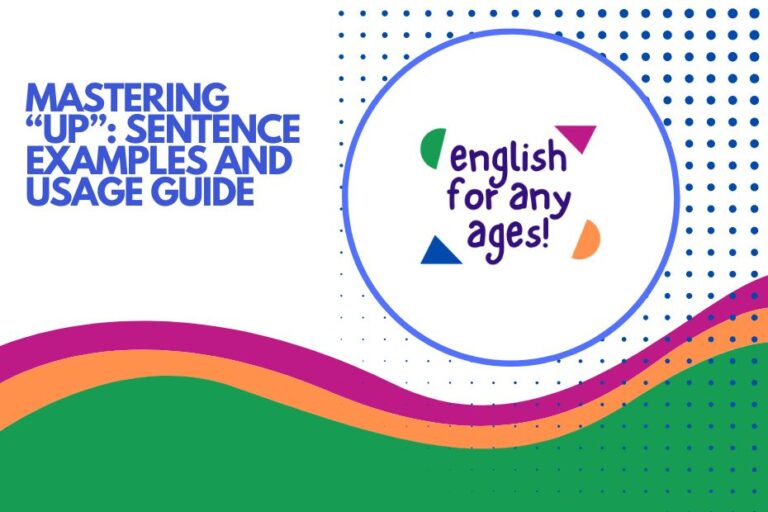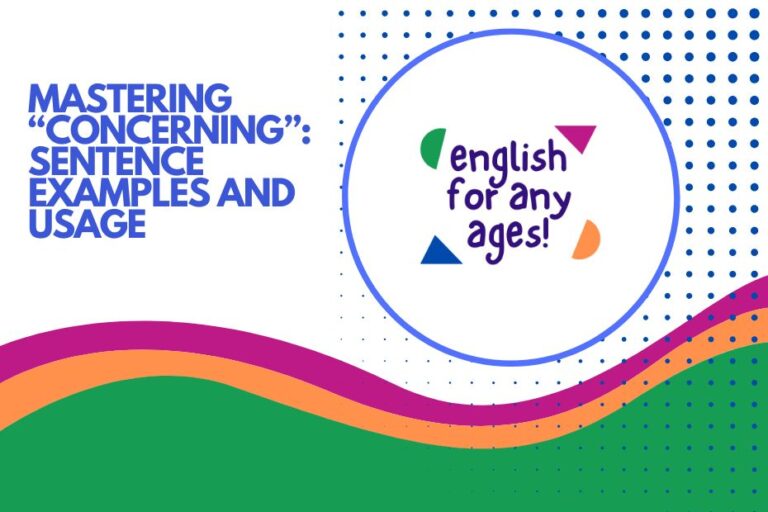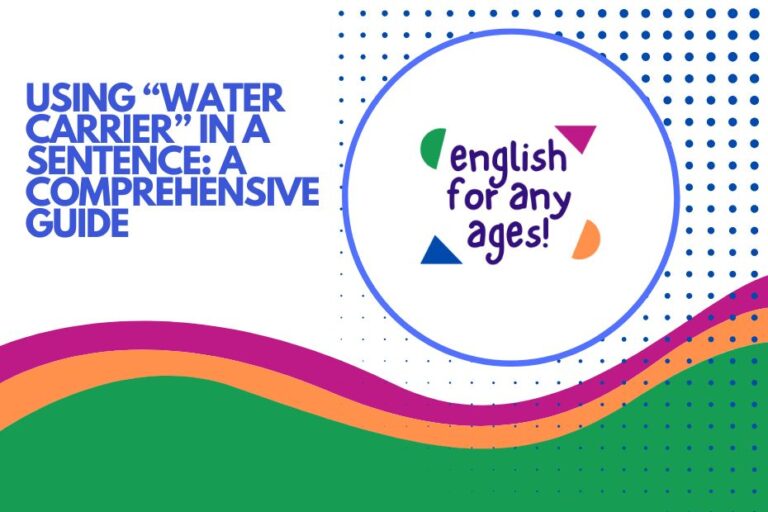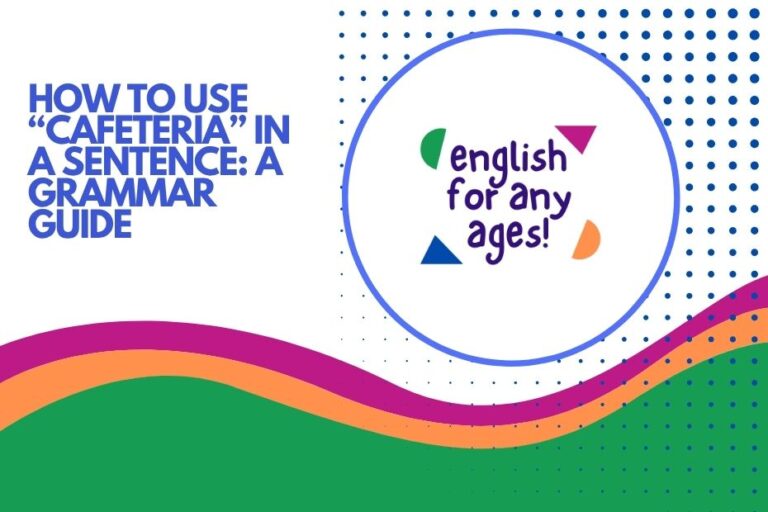Sentence Examples Using the Preposition “Across”
Understanding how to use prepositions correctly is crucial for clear and effective communication in English. The preposition “across” has several different meanings and uses, which can sometimes be confusing for English language learners.
This article provides a comprehensive guide to using “across” in sentences, covering its various meanings, common usage patterns, and potential pitfalls. Whether you are a beginner or an advanced learner, this guide will help you master the use of “across” and improve your overall English proficiency.
Table of Contents
- Introduction
- Definition of “Across”
- Structural Breakdown
- Types of “Across” Usage
- Examples of “Across” in Sentences
- Usage Rules for “Across”
- Common Mistakes with “Across”
- Practice Exercises
- Advanced Topics
- Frequently Asked Questions
- Conclusion
Introduction
Prepositions are essential components of English grammar, serving as connectors that establish relationships between words in a sentence. Mastering prepositions is crucial for conveying precise meaning and avoiding ambiguity.
Among these, “across” stands out due to its versatility, indicating movement, location, opposition, or influence. This comprehensive guide explores the various facets of “across,” providing clear explanations, numerous examples, and practical exercises to enhance your understanding and application of this important preposition.
Whether you’re aiming to refine your writing skills, improve your conversational fluency, or simply deepen your understanding of English grammar, this article offers valuable insights and practical tools. From basic definitions to advanced usage scenarios, we’ll cover everything you need to confidently and accurately use “across” in your daily communication.
By the end of this guide, you’ll be equipped to navigate the nuances of “across” and use it effectively in a wide range of contexts.
Definition of “Across”
The preposition “across” is used to indicate movement from one side to the other of something, a location on the opposite side of something, or a concept of opposition or difference. It can also describe something that affects multiple things or people.
Understanding these nuances is key to using “across” correctly.
Classification: “Across” is classified as a preposition because it connects a noun or pronoun (the object of the preposition) to other words in the sentence, showing a relationship of location, direction, or time. As a preposition, it always takes an object.
Function: The primary function of “across” is to show spatial relationships. It can indicate movement over a surface, location on the opposite side, or extension from one point to another. It can also be used metaphorically to express opposition, similarity, or influence.
Contexts: “Across” is used in various contexts, including:
- Physical Movement: “The cat ran across the street.”
- Location: “The bank is across from the library.”
- Opposition: “The two countries are across from each other on many issues.”
- Influence: “His message resonated across different demographics.”
Structural Breakdown
The structure of sentences using “across” typically involves the following elements:
- Subject: The person or thing performing the action or being described.
- Verb: The action being performed or the state of being.
- Preposition “Across”: Connects the subject and verb to the object.
- Object of the Preposition: The noun or pronoun that follows “across” and is related to the subject and verb.
The basic pattern is: Subject + Verb + Across + Object.
For example, in the sentence “The bird flew across the lake,” the breakdown is:
- Subject: The bird
- Verb: Flew
- Preposition: Across
- Object: The lake
This pattern can be modified with adverbs or adjectives to provide more detail. For instance, “The bird quickly flew across the calm lake” adds adverbs (“quickly”) and adjectives (“calm”) to provide a more vivid description.
Types of “Across” Usage
Across Indicating Movement
This is one of the most common uses of “across.” It describes the action of moving from one side of something to the other. The movement can be literal, such as walking across a street, or figurative, such as spreading a message across a community.
Across Indicating Location
When “across” indicates location, it specifies that something is situated on the opposite side of something else. This often implies a spatial relationship between two objects or places.
For example, “The store is across the street from the park” indicates the store’s location relative to the park.
Across Indicating Opposition or Difference
In this context, “across” is used to highlight contrast or disagreement. It suggests that two entities or ideas are in opposition to each other.
For example, “The two political parties stand across from each other on many issues” illustrates a fundamental difference in their viewpoints.
Across Indicating Affecting Multiple Things
This usage of “across” describes something that has an impact on multiple entities or areas. It conveys a sense of widespread influence or effect.
For example, “The new policy will affect people across the entire company” indicates that the policy’s impact will be felt throughout the organization.
Examples of “Across” in Sentences
Examples of “Across” Indicating Movement
The following table provides examples of “across” used to indicate movement. These sentences illustrate how “across” connects the action of moving to the object being crossed.
| Sentence | Explanation |
|---|---|
| The children ran across the playground. | The children moved from one side of the playground to the other. |
| We walked across the bridge. | We moved from one end of the bridge to the other. |
| The cat jumped across the gap. | The cat leaped from one side of the gap to the other. |
| The news spread across the country. | The news moved from one part of the country to another. |
| She skated across the ice rink. | She moved from one side of the ice rink to the other using skates. |
| The runner dashed across the finish line. | The runner moved quickly from one side of the finish line to the other. |
| The climber traversed across the mountain face. | The climber moved horizontally from one point on the mountain face to another. |
| The message echoed across the valley. | The message traveled from one side of the valley to the other. |
| He swam across the river. | He moved from one bank of the river to the other by swimming. |
| The airplane flew across the ocean. | The airplane moved from one side of the ocean to the other through the air. |
| The light shone across the room. | The light extended from one side of the room to the other. |
| The rumor spread across the school. | The rumor moved from one part of the school to another. |
| The athlete sprinted across the track. | The athlete moved quickly from one side of the track to the other. |
| The shadows stretched across the lawn. | The shadows extended from one side of the lawn to the other. |
| The sound carried across the lake. | The sound traveled from one side of the lake to the other. |
| The project spanned across several departments. | The project extended its influence from one department to another. |
| The hikers hiked across the desert. | The hikers moved from one side of the desert to the other by hiking. |
| The cables stretched across the canyon. | The cables extended from one side of the canyon to the other. |
| The train traveled across the country. | The train moved from one end of the country to the other. |
| The vines climbed across the wall. | The vines moved from one side of the wall to the other by climbing. |
| The wind blew the leaves across the yard. | The wind moved the leaves from one side of the yard to the other. |
| The ship sailed across the sea. | The ship moved from one side of the sea to the other by sailing. |
| The ants marched across the kitchen floor. | The ants moved from one side of the kitchen floor to the other. |
| The artist painted a mural across the building. | The artist created a painting that extended from one side of the building to the other. |
| The spotlight shone across the stage. | The spotlight extended its beam from one side of the stage to the other. |
Examples of “Across” Indicating Location
This table shows how “across” is used to describe the location of something relative to another object or place.
| Sentence | Explanation |
|---|---|
| The bank is across the street from the post office. | The bank is located on the opposite side of the street from the post office. |
| Her house is across the river. | Her house is located on the opposite side of the river. |
| The park is across from the school. | The park is located on the opposite side of the street from the school. |
| There’s a store across the road. | There’s a store located on the opposite side of the road. |
| The restaurant is across the square. | The restaurant is located on the opposite side of the square. |
| The library is just across the park. | The library is located on the opposite side of the park. |
| We live across the street from them. | Our house is located on the opposite side of the street from their house. |
| The stadium is across from the shopping mall. | The stadium is located on the opposite side from the shopping mall. |
| The office is across the hall. | The office is located on the opposite side of the hall. |
| The beach is across the island. | The beach is located on the opposite side of the island. |
| The mountains are visible across the valley. | The mountains can be seen on the opposite side of the valley. |
| The garden is across the courtyard. | The garden is located on the opposite side of the courtyard. |
| The bakery is across the lane. | The bakery is located on the opposite side of the lane. |
| The theater is across from the museum. | The theater is located on the opposite side from the museum. |
| The factory is across the fields. | The factory is located on the opposite side of the fields. |
| The campsite is across the lake. | The campsite is located on the opposite side of the lake. |
| The gallery is across the plaza. | The gallery is located on the opposite side of the plaza. |
| The hotel is across the bay. | The hotel is located on the opposite side of the bay. |
| The school is across from the church. | The school is located on the opposite side from the church. |
| The apartments are across the complex. | The apartments are located on the opposite side of the complex. |
| The cafe is located across from the bookstore. | The cafe is located on the opposite side from the bookstore. |
| The gym is located across the street from my house. | The gym is located on the opposite side of the street from my house. |
| The landmark is across the city. | The landmark is located on the opposite side of the city. |
| The farm is located across the hills. | The farm is located on the opposite side of the hills. |
| The viewpoint is located across the gorge. | The viewpoint is located on the opposite side of the gorge. |
Examples of “Across” Indicating Opposition
Here, “across” conveys a sense of contrast or disagreement between two or more entities.
| Sentence | Explanation |
|---|---|
| The two political parties stand across from each other on many issues. | The parties have opposing views on various subjects. |
| Their opinions are completely across from mine. | Their opinions are in direct contrast to my own. |
| The negotiators were across the table from each other. | The negotiators were in opposing positions during the discussion. |
| The teams were across from each other in the competition. | The teams were competing against each other. |
| Their values are across from our company’s. | Their values conflict with our company’s values. |
| The philosophies are across from each other. | The philosophies are contrasting and incompatible. |
| The strategies were across from each other. | The strategies were conflicting and opposing. |
| Their beliefs are across from the mainstream. | Their beliefs are in opposition to commonly held beliefs. |
| The goals are across from each other in this project. | The goals conflict and are not aligned. |
| The arguments are across from each other in the debate. | The arguments are opposing and contradictory. |
| The cultures stand across from each other in many aspects. | The cultures are very different and contrasting. |
| The approaches are across from each other. | The approaches are conflicting and opposing. |
| Their methods are across from ours. | Their methods are different and contrasting to ours. |
| The viewpoints are across from each other in the discussion. | The viewpoints are opposing and contradictory in the discussion. |
| Their perspectives are across from mine. | Their perspectives are in direct contrast to my own. |
| The ideologies stand across from each other in this debate. | The ideologies are conflicting and opposing in this debate. |
| Their principles are across from our organization’s. | Their principles conflict with our organization’s values. |
| The agendas are across from each other in the meeting. | The agendas conflict and are not aligned in the meeting. |
| Their objectives are across from each other. | Their objectives are conflicting and opposing. |
| The concepts are across from each other in the lecture. | The concepts are contrasting and incompatible in the lecture. |
| The paradigms are across from each other. | The paradigms are conflicting and opposing. |
| Their visions are across from our company’s. | Their visions conflict with our company’s visions. |
| The doctrines are across from each other. | The doctrines are contrasting and incompatible. |
| Their standpoints are across from ours. | Their standpoints are different and contrasting to ours. |
| The theses are across from each other in the academic paper. | The theses are opposing and contradictory in the academic paper. |
Examples of “Across” Indicating Affecting Multiple Things
This table illustrates how “across” can indicate something that has an impact on multiple entities or areas.
| Sentence | Explanation |
|---|---|
| The new policy will affect people across the entire company. | The policy will have an impact on all employees in the company. |
| The disease spread across the population. | The disease affected a large number of people in the population. |
| The project has implications across various departments. | The project affects multiple departments. |
| The initiative impacted communities across the region. | The initiative had an effect on numerous communities. |
| The benefits are distributed across different groups. | The benefits are shared among various groups. |
| The changes resonated across the organization. | The changes had an effect throughout the organization. |
| The funding was spread across multiple projects. | The funding was allocated to several projects. |
| The responsibility is shared across the team. | The team members all share the responsibility. |
| The survey was conducted across different demographics. | The survey included people from various demographic groups. |
| The training is available across all levels of employees. | The training is accessible to employees at every level. |
| The support is provided across different platforms. | The support is available on various platforms. |
| The influence extended across several countries. | The influence had an impact on multiple countries. |
| The impact was felt across different sectors. | The impact had an effect on various sectors. |
| The reach expanded across the globe. | The reach extended worldwide. |
| The expertise is distributed across the team. | The team members share the expertise. |
| The knowledge is spread across different fields. | The knowledge is shared among various fields. |
| The resources are allocated across multiple departments. | The resources are distributed to several departments. |
| The analysis was conducted across various categories. | The analysis included different categories. |
| The data was collected across different regions. | The data was gathered from various regions. |
| The findings were consistent across different studies. | The findings were similar in various studies. |
| The solution is applicable across multiple systems. | The solution is suitable for various systems. |
| The improvement was observed across different metrics. | The improvement was noticed in various metrics. |
| The benefits are applicable across different industries. | The benefits are suitable for various industries. |
| The trend is evident across different age groups. | The trend is noticeable in various age groups. |
| The sentiment was expressed across different social media platforms. | The sentiment was expressed on multiple social media platforms. |
Usage Rules for “Across”
Using “across” correctly involves understanding its nuances and applying specific rules. Here are some key guidelines:
- Movement: When indicating movement, “across” is often followed by a noun that represents the area being traversed. For example, “He ran across the field.”
- Location: When indicating location, “across” specifies a position on the opposite side of something. For example, “The library is across from the park.”
- Opposition: When indicating opposition, “across” highlights contrast or disagreement. For example, “Their views are across from each other.”
- Affecting: When indicating affecting multiple things, “across” shows widespread influence. For example, “The impact was felt across the organization.”
Exceptions and Special Cases:
- In some cases, “across” can be used without a direct object, especially when the context is clear. For example, “He went across” (implying he went across a specific area).
- The phrase “come across” is an idiomatic expression meaning to find something unexpectedly. For example, “I came across an old photograph.”
Common Mistakes with “Across”
One common mistake is confusing “across” with “through.” “Across” implies movement on the surface or to the opposite side, while “through” implies movement within something. For example:
Incorrect: “He walked through the street.” Correct: “He walked across the street.”
Another mistake is using “across of” instead of “across from.” The correct phrase for indicating location on the opposite side is “across from.”
Incorrect: “The store is across of the park.” Correct: “The store is across from the park.”
Here are some additional examples of common mistakes and their corrections:
| Incorrect | Correct | Explanation |
|---|---|---|
| She lives across of the street. | She lives across the street. | “Across” does not require “of” when indicating location. |
| The cat jumped through the table. | The cat jumped across the table. | “Across” is used to indicate jumping over a surface. |
| The message spread through all the departments. | The message spread across all the departments. | “Across” is used to indicate affecting multiple departments. |
| The river flows across of the city. | The river flows across the city. | “Across” does not require “of” when indicating direction. |
| They are across of each other in their opinions. | They are across from each other in their opinions. | When indicating opposition, use “across from.” |
Practice Exercises
Test your understanding of “across” with these exercises. Fill in the blanks with the correct use of “across.”
- The children ran _______ the field.
- The bank is _______ the street from the library.
- Their opinions are completely _______ from mine.
- The new policy will affect people _______ the company.
- I came _______ an old photograph in the attic.
- The bridge stretches _______ the river.
- The protesters marched _______ the city.
- The two countries are _______ from each other on many issues.
- The light shone _______ the room.
- The rumor spread _______ the school.
Answer Key:
- across
- across
- across
- across
- across
- across
- across
- across
- across
- across
Exercise 2: Choose the correct sentence from each pair.
- a) She lives across of the street. b) She lives across the street.
- a) The cat jumped through the table. b) The cat jumped across the table.
- a) The message spread through all the departments. b) The message spread across all the departments.
- a) The river flows across of the city. b) The river flows across the city.
- a) They are across of each other in their opinions. b) They are across from each other in their opinions.
- a) The road winds across the mountain. b) The road winds through the mountain.
- a) The company operates across the globe. b) The company operates through the globe.
- a) The banner stretched through the building. b) The banner stretched across the building.
- a) The sound echoed across the valley. b) The sound echoed through the valley.
- a) The data was collected across different regions. b) The data was collected through different regions.
Answer Key:
- b)
- b)
- b)
- b)
- b)
- a)
- a)
- b)
- a)
- a)
Advanced Topics
For advanced learners, it’s important to understand the nuanced usage of “across” in more complex contexts. This includes recognizing its use in idiomatic expressions and understanding how it can be combined with other prepositions for more precise meaning.
For example, “across from” is often used to specify a location directly opposite something, while “across the board” is an idiom meaning “applying to all.”
Another advanced topic is understanding the subtle differences between “across” and similar prepositions like “over” and “through.” While “across” generally implies movement on a surface or to the opposite side, “over” can imply a higher trajectory or covering something completely. “Through” implies movement within something, as previously mentioned.
Mastering these distinctions requires careful attention to context and a strong understanding of English idioms.
Frequently Asked Questions
- What is the difference between “across” and “through”?
“Across” indicates movement from one side to the other of a surface or space, or location on the opposite side. For example, “He walked across the street” or “The store is across the street.” “Through” indicates movement within something or from one end to the other of an enclosed space. For example, “He walked through the forest” or “The train went through the tunnel.”
- When should I use “across from” instead of “across”?
Use “across from” to specifically indicate that something is located on the opposite side of something else. This phrase emphasizes the spatial relationship. For example, “The bank is across from the post office.” If you simply want to indicate that something is on the other side without emphasizing the direct opposition, you can use “across.” For example, “The bank is across the street.”
- Can “across” be used in a figurative sense?
Yes, “across” can be used figuratively to describe something that affects multiple things or to indicate opposition or difference. For example, “The new policy will affect people across the entire company” or “Their opinions are across from mine.”
- What does “come across” mean?
“Come across” is an idiomatic expression that means to find something or someone unexpectedly. For example, “I came across an old photograph in the attic” or “I came across an old friend at the store.”
- Is it correct to say “across of”?
No, it is generally incorrect to say “across of.” The correct phrases are “across” or “across from.” For example, say “The store is across the street” or “The store is across from the park,” not “The store is across of the park.”
- How can I improve my understanding of prepositions like “across”?
The best way to improve your understanding of prepositions is through consistent practice and exposure to the English language. Read extensively, pay attention to how native speakers use prepositions, and practice using them in your own writing and speaking. Additionally, you can use online resources and grammar guides to study specific prepositions and their usage rules.
- What is the difference between “across” and “over”?
While both “across” and “over” can indicate movement from one side to another, “across” typically implies movement on a surface or in a horizontal direction. “Over,” on the other hand, often implies movement above something or covering something completely. For example, “He walked across the bridge” (on the surface) versus “He jumped over the fence” (above the fence).
- Are there any regional differences in the usage of “across”?
While the core meanings of “across” remain consistent, there might be slight regional variations in usage or idiomatic expressions. However, these variations are generally minor and should not cause significant confusion. Pay attention to the specific context and the way native speakers in a particular region use “across” to get a better understanding of any regional nuances.
Conclusion
Mastering the use of “across” is a significant step towards improving your overall English proficiency. By understanding its various meanings, usage patterns, and common pitfalls, you can communicate more clearly and effectively.
Remember to pay attention to context, practice regularly, and be mindful of common mistakes. With consistent effort, you will become more confident in using “across” and other prepositions correctly.
This guide has provided a comprehensive overview of “across,” covering its definition, structural breakdown, types of usage, examples, rules, common mistakes, practice exercises, and frequently asked questions. By reviewing this material and continuing to practice, you can solidify your understanding and enhance your ability to use “across” accurately and confidently in your daily communication.
Keep practicing and remember that language learning is a continuous journey!






